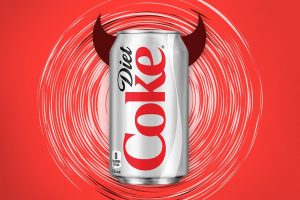
Newborn Obesity
By Dean L. Jones
Now and again, it is unfortunate to see expecting mothers drinking artificially sweetened sodas and never pausing long enough to understand that the developing baby is sipping on the same toxic concoction. The latest research reveals how those pregnant women who consume diet sodas are twice as likely to raise a fat child.
Routinely observed in the growing commerce of Latino-based grocery stores frequently one will see extremely obese Latin babies, both boys and girls. This obesity trend corresponds to the aforementioned finds of fatter children; especially since a large portion of Mexican cultural serves and consumes plenty of Coca Cola, as well as other sugary sodas.
The research did lean more heavily on reporting this outcome of the likelihood of producing a fatter baby to those expectant mothers who drank artificially sweetened sodas every day. In addition, unborn babies exposed to artificial sweeteners in the womb have an increased propensity of developing a sweet tooth, which in turn will drive their respective calories consumption way up.
Usually, aspartame and other artificial sweeteners are primarily promoted to diabetics and those concerned about gaining weight. The thing is artificial sweeteners are bad and cause the insulin in the body to become more sensitivity to wanting more sugar than what table sugar would cause.
When we eat something sweet, our brain releases dopamine, which activates the brain’s reward center. The appetite-regulating hormone leptin is also released, which eventually informs our brain that we are full once a certain amount of calories have been ingested. However, when we consume something that tastes sweet but does not contain any calories, the brain’s pleasure pathway still gets activated by the sweet taste, but there is nothing to deactivate it, since the calories never arrive, thereby wanting to eat more and more.
Besides worsening insulin sensitivity and promoting weight gain, aspartame and other artificial sweeteners also advance other health problems associated with excessive sugar consumption, including cardiovascular disease and Alzheimer’s disease. For the record, aspartame is better known by the brand names NutraSweet and Equal. It has a competitor that is nearly as harmful called sucralose, commonly recognized under the brand name Splenda.
Sucralose, a chemical about 320 to 1,000 times as sweet as sucrose (table sugar), three times as sweet as aspartame, and twice as sweet as saccharin, but still a synthetic additive created by chlorinating sugar. The chemical structure of the chlorine in sucralose is almost the same as that in the now-banned pesticide DDT (dichlorodiphenyltrichloroethane, officially banned as a health hazard in 1973).
Sweet is not something that has to come from sodas and the like. For example, by soaking about ¾ cup of raisins in warm water, then later puree the raisins in a high-powered blender with ¼ cup of the liquid they soaked in and the results will be very sweet. Living it up requires enough discipline to live SugarAlert!
www.SugarAlert.com
Since 2007, Dean steadfastly
shares his understanding on the dangers of eating processed sugar.
fffffffffff


